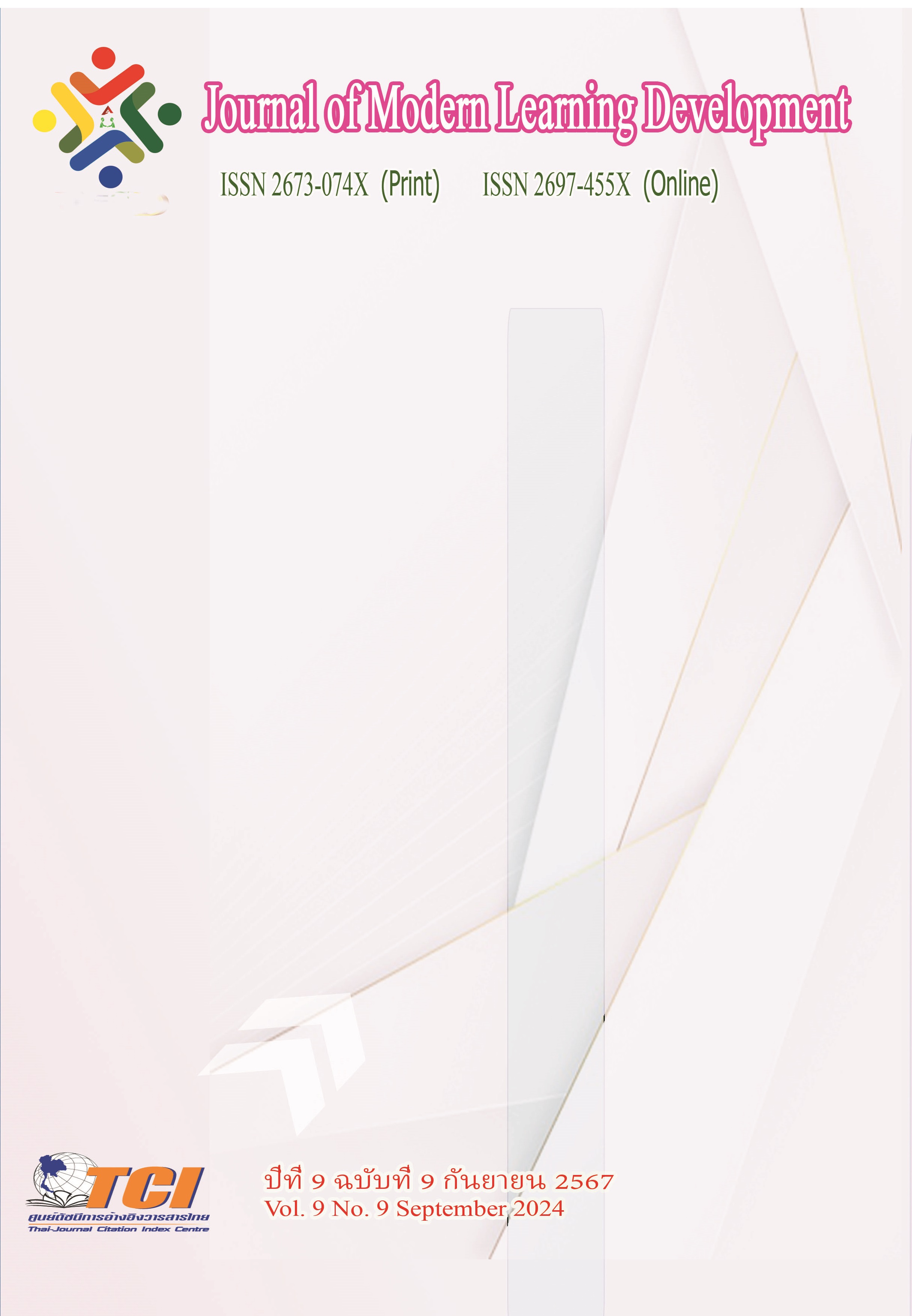ENHANCING THE ELECTRONIC DOCUMENT SYSTEM USAGE OF THE OFFICE OF FACULTY OF SCIENCE CHIANG MAI UNIVERSITY
Main Article Content
Abstract
This study aims to 1) analyze the context of using the electronic document management system at the Office of the Faculty of Science, Chiang Mai University, and 2) find ways to enhance the use of the electronic document management at
the Office of the Faculty of Science, Chiang Mai University. This study employed a qualitative research methodology, collecting data from personnel using the electronic document management system at the Office of the Faculty of Science, Chiang Mai University, using in-depth interviews with a semi-structured interview guide. The key informants were from two levels: executives and operational staff.
The study found that 1) the current context of using the electronic document management system by the personnel at the Office of the Faculty of Science, Chiang Mai University can be divided into two main aspects: Aspect 1 - Satisfaction with using the electronic document management system, and Aspect 2 - Dissatisfaction or problems and obstacles in using the electronic document management system. 2) There are three main approaches to enhancing the use of the electronic document management system: Approach 1 - Support and campaigning from the executives of the Faculty of Science to raise awareness among the personnel about using the electronic document management system, Approach 2 - Training on using the electronic document management system for personnel, Approach 3 - Developing a user-friendly electronic document management system by creating a "dashboard" and adding a notification system for receiving and sending documents to relevant operational staff.
Article Details
References
คณะวิทยาศาสตร์ มหาวิทยาลัยเชียงใหม่. (2566). แผนผังโครงสร้างการบริหารงาน คณะวิทยาศาสตร์ มหาวิทยาลัย เชียงใหม่. ออนไลน์. สืบค้นเมื่อ 26 มิถุนายน 2566. แหล่งที่มา: https :// www .sci ence.cmu.ac. th /webthai/organization_plan.php#ad-image-10
คณะวิทยาศาสตร์ มหาวิทยาลัยเชียงใหม่. (2566). รายงานจำนวนบุคลากรคณะวิทยาศาสตร์. ออนไลน์. สืบค้นเมื่อ 26 มิถุนายน 2566. แหล่งที่มา: https://epg.science.cmu.ac.th/sciemployment/
ธัญวรัตม์ กระจ่าง. (2557). ปัจจัยที่เกี่ยวข้องกับการใช้งานระบบสารบรรณอิเล็กทรอนิกส์อย่างมีประสิทธิภาพของบุคลากรคณะวิทยาศาสตร์การแพทย์ มหาวิทยาลัยนเรศวร. วารสารมนุษยศาสตร์และสังคมศาสตร์ มหาวิทยาลัยพะเยา. 2 (2), 37-45.
นฤมล สุขเสาร์ และพจนา พิชิตปัจจา. (2566). การพัฒนาแนวทางและยกระดับกระบวนการขอกำหนดตำแหน่งทางวิชาการของมหาวิทยาลัยเชียงใหม่. วารสาร มจร อุบลปริทรรศน์. 8 (2), 200 - 201.
มติชนออนไลน์. (2565). การนำเทคโนโลยีมาใช้ในศาลยุติธรรมบริการประชาชน. ออนไลน์. สืบค้นเมื่อ
มิถุนายน 2566. แหล่งที่มา: https://www.matichon.co.th/local/crime/news_3335335
มหาวิทยาลัยเชียงใหม่. (2561). ยุทธศาสตร์การบริหารมหาวิทยาลัยเชียงใหม่ ระยะ 4 ปี (พ.ศ.2562 - 2565).ออนไลน์. สืบค้นเมื่อ 26 มิถุนายน 2566. แหล่งที่มา: https://planning.oou.cmu.ac.th/wp-content/uploads/2019/06/2019-06-20_07-45-51_62-65-.pdf
สารภี สหะวิริยะ และพรชัย ลิขิตธรรมโรจน์. (2562). ปัญหาการใช้งานระบบเอกสารอิเล็กทรอนิกส์
(E-document) ของบุคลากรคณะวิทยาศาสตร์ และคณะวิศวกรรมศาสตร์ มหาวิทยาลัย สงขลานครินทร์ วิทยาเขตหาดใหญ่. การค้นคว้าแบบอิสระรัฐประศาสนศาสตรมหาบัณฑิต. บัณฑิตวิทยาลัย: มหาวิทยาลัยสงขลานครินทร์
สุมาลี ถวายสินธุ์, ปราณี จิตรเย็น, กัลญา โปธาคำ และอรทัย พลหงษ์. (2555). ปัญหาของผู้ใช้ระบบงานสารบรรณอิเล็กทรอนิกส์และแนวทางการปรับปรุงระบบงานของมหาวิทยาลัยราชภัฏจันทรเกษม. วารสารจันทรเกษมสาร. 18 (34), 23 - 32.
อโณทัย งามวิขัยกิจ. (2565). ปรับปรุงกระบวนการให้บริการด้วย Service Blueprint. ออนไลน์. สืบค้นเมื่อ
มิถุนายน 2566. แหล่งที่มา: https://www.anothaimarketing.com/2022/05/service-blue print.html
Alexander Osterwalder, Yves Pigneur, Greg Bernarda, Alan Smith. Value Proposition Design. WeLearn


